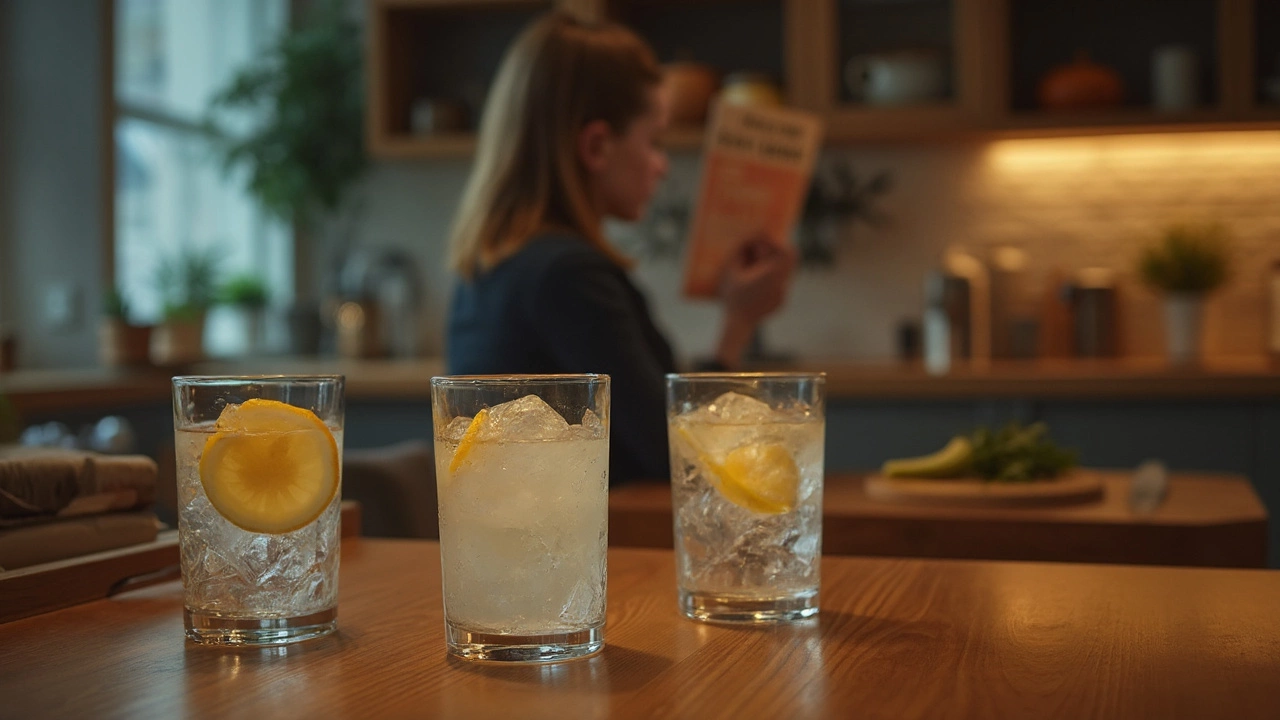Drinking Habits: Everyday Tips for Safer, Smarter Sipping
How you drink shapes how you feel, how you interact, and even how safe you are on the road. Below are simple habits you can start today that make every glass—or mocktail—work for you instead of against you.
Prep Your Palate Before the First Sip
Before you dive into a wine tasting, think about what you’ll drink right before it. Light, slightly acidic drinks like sparkling water or a small sip of tea clean your palate without masking the wine’s flavors. Avoid heavy, salty snacks that can dull the nuances you’re trying to notice.
If you’re planning a whisky tasting, a few bites of plain crackers, mild cheese, or even a slice of apple keep your taste buds sharp. The goal is to keep flavors clear, not to overwhelm them with strong pre‑tasting foods.
Swap Alcohol for Smart Alternatives
Mocktails aren’t just for kids or “sober” nights. A well‑balanced mocktail can give you the ritual of a cocktail—glass, garnish, a splash of fizz—without the booze. Look for recipes that blend fresh fruit, herbs, and a splash of tonic or sparkling water for a refreshing, low‑calorie option.
When you need a non‑alcoholic pick‑me‑up during the day, try a “healthy mocktail” that adds a dash of ginger, cucumber, or a squeeze of lemon. These ingredients boost flavor and can aid digestion, making the drink feel purposeful rather than just empty calories.
Even on a night out, you can alternate alcoholic drinks with water or a light mocktail. This habit slows down alcohol intake, keeps you hydrated, and helps you stay in control when it’s time to head home.
Speaking of heading home, never underestimate the risk of driving after a wine tasting. Even a small amount of alcohol can affect reaction time. The safest bet is to set a clear limit—one glass per hour—and use a designated driver or rideshare. Knowing your blood alcohol content (BAC) level can save you from costly legal trouble and, more importantly, from accidents.
If you’re at a bar and the bartender asks for a “simple” vodka mixer, consider the classics: soda water and a wedge of lime, or a splash of cranberry. These keep the drink light and let the vodka’s character shine without drowning it in sugary syrups.
When you do want to enjoy vodka straight, choose a brand known for smoothness. Look for low‑impurity vodkas that feel “silky” on the tongue—often labeled as “premium” or “ultra‑filtered.” A smooth vodka means fewer harsh after‑tastes and a more enjoyable sipping experience.
Food pairings also play a big role in drinking habits. Cheese with Chardonnay, for example, matches the wine’s buttery notes with creamy cheeses like Brie or Camembert. The same principle works for beer, whisky, and even non‑alcoholic drinks—match intensity with intensity.
Finally, remember that drinking habits are personal. What works for a seasoned sommelier might feel overkill for someone who’s just started exploring wine. Experiment with one or two of these tips at a time, track how you feel, and adjust accordingly. The best habit is the one you can keep without feeling forced.
Wondering if 3 gins a night is too much? Get the facts, real health info, stats, and tips on drinking habits and limits. Your body and mind might thank you.
View DetailsWhiskey's allure often draws people to question their drinking habits. Some wonder if four shots a day is an indulgence, a norm, or a cause for concern. This article explores the impact of this popular spirit on health, taste experiences, and lifestyle choices. We'll delve into cultural perspectives, health studies, and expert tips for moderation. For whiskey enthusiasts, understanding these aspects is key to enjoying the spirit responsibly.
View Details


